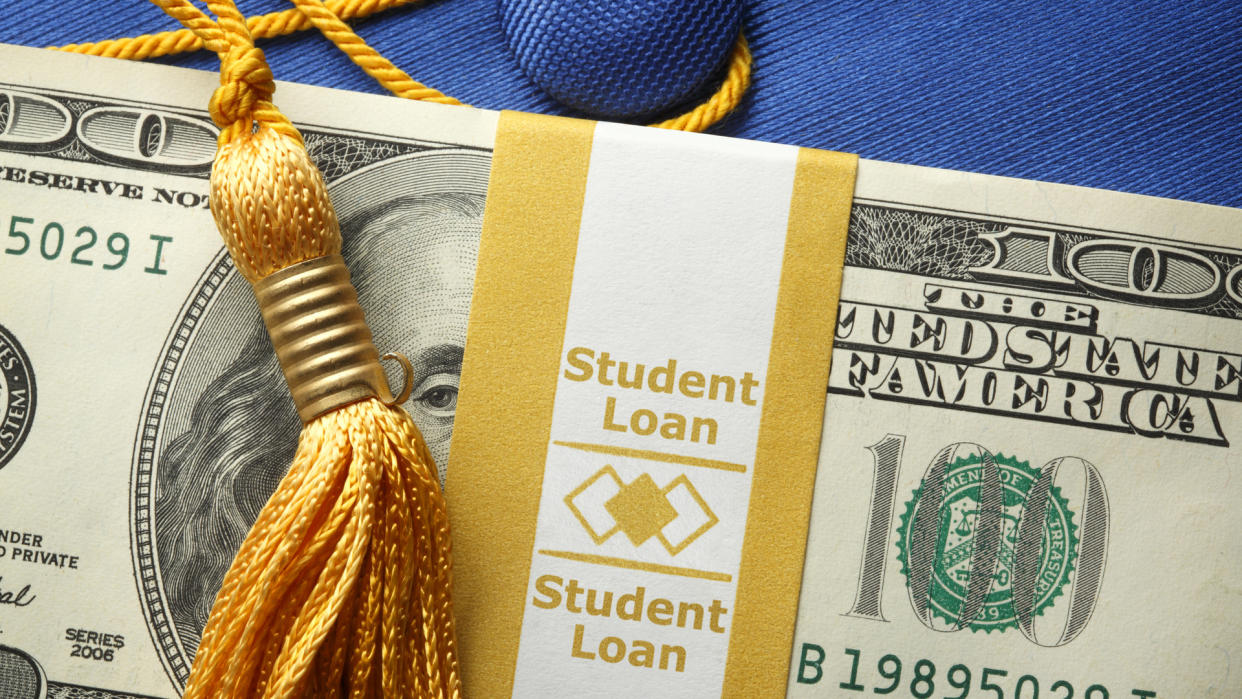Student Loan Forgiveness: Which States Are Most Interested (and Does It Correlate With Their Debt)?

- Oops!Something went wrong.Please try again later.
Student loan forgiveness is one of the hottest topics President Joe Biden has been mulling over so far this year.
See: Surprising Things You Can Buy With Food Stamps in the South
More: Looking To Diversify in a Bear Market? Consider These 6 Alternative Investments
Every time the federal student loan moratorium nears its end date, discussion begins on either extending the rolling temporary loan forgiveness grace period or enacting “sweeping” legislation to overhaul the existing federal programs that have burdened U.S. students with $1.7 trillion in loan debt.
Before the pandemic hit, 10 million borrowers were behind in paying their student loan debts and 3 million students had outstanding loans exceeding $100,000, per CNBC.
According to CNBC, the Biden administration has said it is close to announcing details of its revamped federal student loan forgiveness model. It is thought that Biden wants to spend approximately $321 billion to forgive $10,000 from students’ loans — and completely eliminate a third of all current outstanding loan balances.
Many advocacy groups and fellow Democrats are pushing the president to establish a broader, more compassionate loan forgiveness program, including more loan elimination and major reform to the existing federal student loan system.
Live Richer Podcast: First-Time Homebuying During Inflation: Is It Worth It?
In an attempt to see where in the United States student loan forgiveness demand was most popular, My eLearning World collaborated with Mindnet Analytics to study loan forgiveness interest levels in all 50 states before and after the COVID-19 pandemic. Its findings surprisingly don’t correlate with existing data on where state averages for debt at graduation were the highest.
Using search trends and demographic data before and after the pandemic, the study found the following 10 states have had the biggest increases in personal interest regarding the concept of student loan forgiveness, according to My eLearning World.
South Dakota.
Montana.
Pennsylvania.
Illinois.
Ohio.
Iowa.
Minnesota.
Idaho.
Wisconsin.
Michigan.
In contrast, in its “Student Debt and the Class of 2020” report, The Institute for College Access & Statistics (TICAS) found that state averages for public and private college student debt at graduation varied widely, from Utah’s ~$18,350 average to New Hampshire’s ~$39,950.
But none of the 10 states listed above were among the top 10 states with the largest average student loan debt per borrower — with the exception of Pennsylvania, which ranked third on both lists. For whatever reason, respondent interest levels around student loan forgiveness do not seem to correlate with average loan debt across states.
Here is TICAS’ list of the states with the largest loan debt per student upon graduation.
1. New Hampshire: $39,928.
2. Delaware: $39,705.
3. Pennsylvania: $39,375.
4. Rhode Island: $36,791.
5. Connecticut: $35,853.
6. New Jersey: $35,117.
7. Vermont: $34,866.
8. Massachusetts: $33,457.
9. District of Columbia: $32,966.
10. Maine: $32,764.
More From GOBankingRates
This article originally appeared on GOBankingRates.com: Student Loan Forgiveness: Which States Are Most Interested (and Does It Correlate With Their Debt)?

